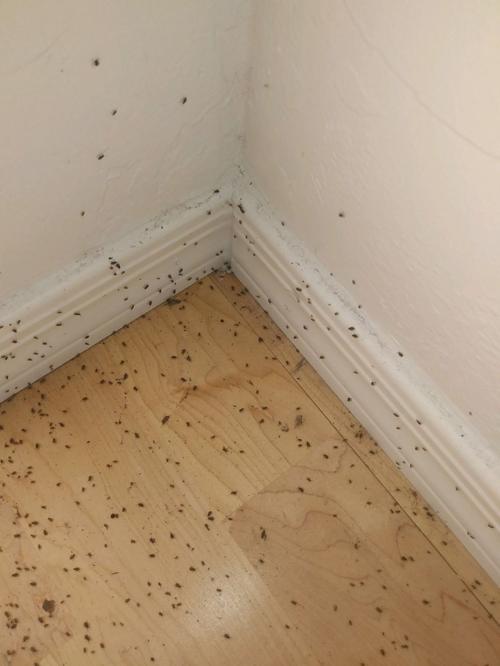If you’re lucky, you haven’t been acquainted with any large clusters of small bugs crawling around your home or backyard.
But for everyone else, you’ve probably become quite familiar with false chinch bugs.
This is peak season for false chinch bugs — not to be confused with the real chinch bugs that live in the Midwest. They are a brownish-gray color and are less than a quarter of an inch long. When they’re immature, they have camouflage red markings on their bodies.
They’re completely harmless to people, but can be a nuisance to some.
“As they reach maturity in April, they begin to cluster together in extremely high numbers in preparation for migration,” according to the University of Arizona’s Cooperative Extension website.
Video by Danielle Marsh
Thanks to Tucson’s wet winter, they’ve been extremely noticeable in Tucson this year.
In the month of April, pest-control company Truly Nolen received more than 150 calls about the bugs — and that’s just the company’s east division, which serves Tucson’s east side.
Three days into May, the division had already received 10 calls, according to Adi Kuric, the division’s senior service coordinator.
Kuric said this is the largest boom he’s seen in many years.
“They’re out in huge numbers right now because we’ve had a great series of rains for the winter and spring, which we’ve been lacking in previous years,” said Gene Hall, who manages the UA Insect Collection and works with Cooperative Extension. “It’s been several years since we had a bumper crop.”
False chinch bugs feed on weeds usually of the mustard family, such as the London rocket that is in the Tucson area.
“The plants they feed on are in large numbers and doing really well right now — which is why false chinch bugs are doing well right now,” Hall said.
And false chinch bugs might be back in large numbers next year — but it all depends on what the upcoming winter and spring are like.
“If we have a dry, warm winter coming up, then there’s a good chance we won’t see numbers like this (next year),” he said.
If they come back in large clusters next year, the best thing to do is to remove any weeds before spring starts, Hall said. If you remove weeds after false chinch bugs have arrived, it could be too late.
Unfortunately, if you have them in your home currently, there’s not a whole lot you can do beyond making sure there are no holes or gaps in your windows and doors that might allow them to get in.
“You sort of have to ride it out,” Hall said.
But the good news is that they won’t be around much longer — at least not in such large clusters.
As temperatures rise and dry conditions make a comeback, likely within the next few weeks, false chinch bugs will go elsewhere or eventually die off. Some might linger, but not in the large, noticeable groups that Tucsonans are currently seeing.
“It’ll be like they were never here,” Hall said.
False chinch bugs are all over Tucson: Here are 6 facts about them
What do they look like?
Updated
They're tiny — less than a quarter of an inch long.
They're a brownish gray color and narrow-bodied.
And while they're still immature, they have camouflage red marks on their bodies.
Do they bite?
UpdatedNope.
They might be annoying, but they're completely harmless to humans!
Why are they here?
UpdatedFalse chinch bugs are in the Tucson area often — but they aren't usually noticeable.
Mid-springtime is peak season for them. And they're especially noticeable after rainy winters/early springs, thanks to increased plant growth.
And when we have those wet winters, false chinch bugs come out in clusters, making them much easier to spot.
What do they feed on?
UpdatedFalse chinch bugs feed on weeds, especially those of the mustard family such as the London rocket, which is seen in Tucson.
How do I get rid of them?
UpdatedThere's good news and bad news.
Bad news first: Once false chinch bugs have made an appearance in your home, there's not a whole lot you can do to get rid of them.
Since false chinch bugs feed on weeds, experts say it's important to pull weeds in early spring — before the bugs arrive. If you clear out your weeds after false chinch bugs are already there, it might be too late.
Another tip: Make sure all windows and doors are free of gaps or holes.
The good news: They aren't around for long! When temperatures outside increase and conditions become drier, false chinch bugs migrate or die off.
When will they be back?
UpdatedIt all depends on the winter we have this year and the early spring we have next year.
If we don't have a wet winter/early spring, false chinch bugs likely won't be back in the high volume we saw them this year.





